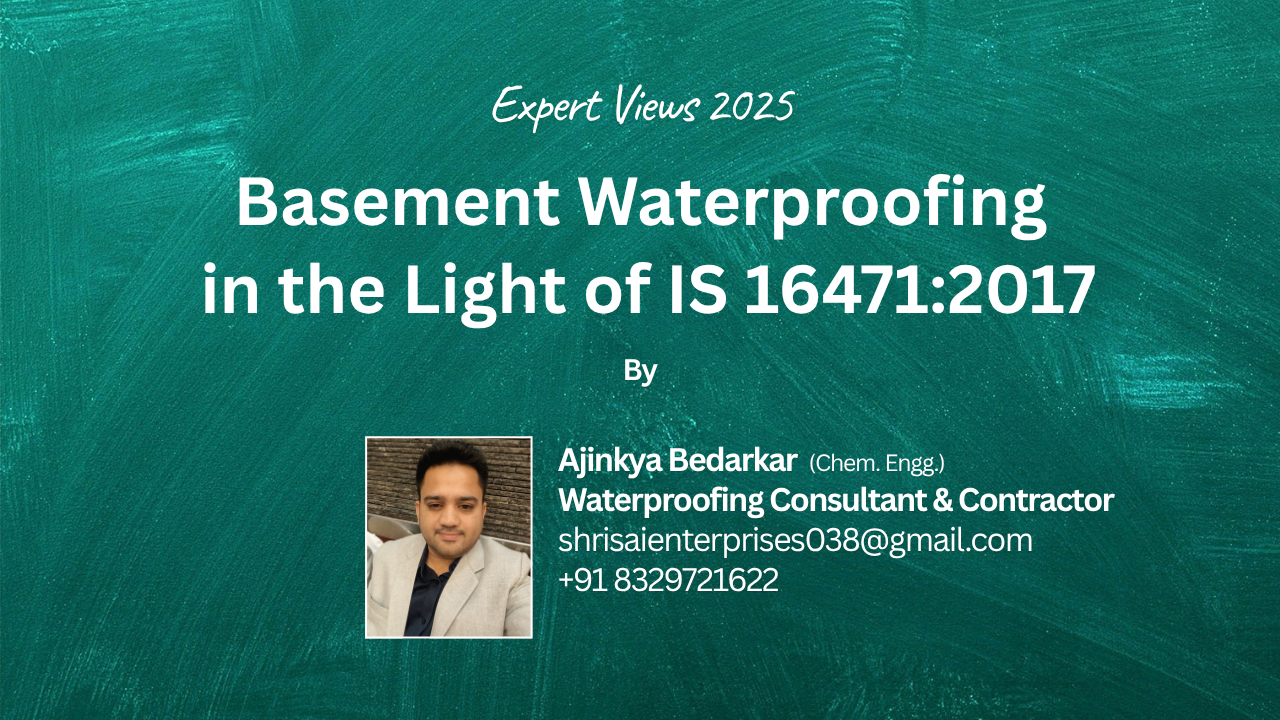Ajinkya Bedarkar (Chem. Engg.)
Waterproofing Consultant & Contractor
Basements, being below ground level, face constant exposure to moisture, hydrostatic pressure, and seepage. Without proper waterproofing, these structures are prone to dampness, corrosion, cracks, and long-term deterioration, resulting in loss of functionality and costly repairs. Recognizing this, the Bureau of Indian Standards (BIS) introduced IS 16471:2017 – Protection of Below Ground Structures Against Water from the Ground – Guidelines, a comprehensive code offering direction on design, materials, and construction practices for waterproofing basements and other below-ground structures.
Unlike product-specific standards, IS 16471:2017 acts as a framework that guides engineers, architects, and contractors to assess risks, select appropriate protection systems, and ensure durability. It applies to structures such as basements, retaining walls, underpasses, and foundations where preventing water ingress is critical.
The standard highlights three broad methods of protection:
Barrier Waterproofing (Tanking or Membranes): Involves applying waterproof membranes or coatings to walls and slabs to block water entry.
Structurally Integral Watertight Construction: Ensures water tightness through dense concrete, proper design, and sealed joints with water stops.
Drained Cavity or Drainage Systems: Incorporates drainage layers, sumps, or pumps to relieve water pressure and handle seepage efficiently, ensuring long-term structural safety and dry interiors.
The process starts with risk assessment analyzing groundwater levels, soil type, and chemical conditions. Based on findings, a suitable waterproofing strategy is designed using appropriate materials and detailing for joints, wall-floor junctions, and penetrations. IS 16471 emphasizes quality control, proper installation, and protection of waterproofing layers during backfilling.
Key considerations include managing hydrostatic pressure, ensuring durability of materials, and planning maintenance access. Since post-construction repairs are costly and difficult, getting waterproofing right at the design and execution stage is essential. The standard also advises the use of complementary codes for materials like membranes, coatings, and admixtures referenced in its annexures.
IS 16471:2017 is a milestone for the Indian construction industry, bridging the gap between material standards and practical application. It encourages professionals to treat waterproofing as an integral part of structural design, not an afterthought.
In conclusion, basement waterproofing is vital for the safety, longevity, and comfort of below-ground spaces. By following IS 16471:2017, stakeholders can ensure durable, watertight structures minimizing risks of seepage, structural damage, and expensive future repairs thereby achieving both performance and peace of mind.
Ajinkya Bedarkar (Chem. Engg.)
Waterproofing Consultant & Contractor
shrisaienterprises038@gmail.com
+91 8329721622




